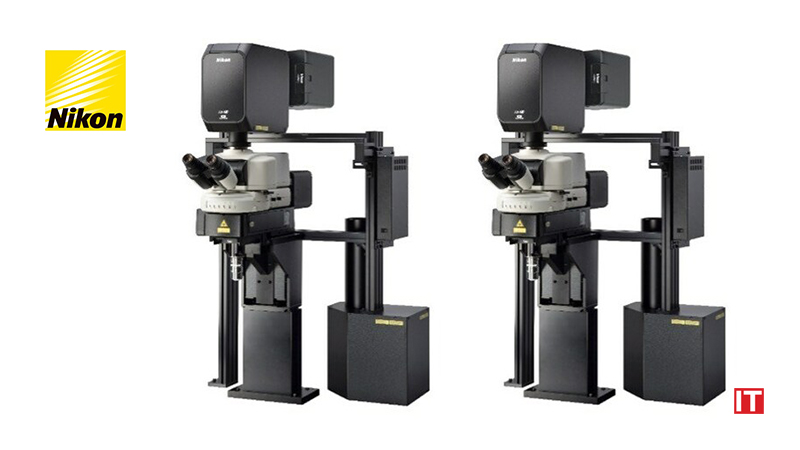Nikon Instruments Inc. has announced the release of the AX R MP with NSPARC super-resolution multiphoton confocal microscope, which enables extremely sensitive array detection and super-resolution in deep areas within large living organism specimens. This product will contribute to the understanding of brain diseases such as Alzheimer’s and Parkinson’s disease, as well as drug discovery research.
Development Background
In recent years, multiphoton microscopy has been used to drive scientific understanding of topics such as real-time neuronal activity and drug efficacy in living organisms.
Nikon has been in a leader in super-resolution microscopy since 2010, offering many technologies that exceed the resolution limit of general optical microscopes. In addition, Nikon released the AX R MP multiphoton confocal microscope last year, providing high-resolution, high-speed, large field-of view images in deep areas within living bodies.
Now, by combining the unmatched sensitivity of array-based NSPARC detection and the optical superiority of the AX R MP, super-resolution observation of deep areas within living bodies can be realized. The combination of these technologies will contribute to nervous system drug discovery research helping to advance knowledge around diseases such as Alzheimer’s, Parkinson’s and mechanisms of dementia.
Also Read: ZOLL Expands Temperature Management Portfolio to Include IQool™ System, High-Quality Surface Option
Main features
1. Observe fine structures deep within living bodies by combining multiphoton microscopy with super-resolution.
With the addition of “NSPARC”-based detection to the “AX R MP”, low-noise super-resolution detection can be applied to image deep within large, living specimens. In addition, combining low-noise array detection with a high-speed resonant scanner allows researchers to get a clear picture of the rapid dynamics within the living brain. These images can drive analyses that may link neuronal disease mechanisms with neuronal morphology and dynamics. Visualizing the fine structures of the central nervous system using this combination can bring forth more information than normal detectors, contributing to the understanding of their functions.
2. Utilize Nikon-developed AI to increase the efficiency of imaging and analysis workflows.
With a rapidly expanding suite of AI tools, super-resolution images acquired with “AX R MP with NSPARC” can be efficiently captured, processed and analyzed using Nikon‘s imaging software, “NIS-Elements”. AI automatically performs complex image processing after imaging, such as brightness adjustment, noise removal, and target cell extraction. These powerful AI functions can reduce user workloads, improve data collection and enhance image analysis.
SOURCE: PRNewswire

































